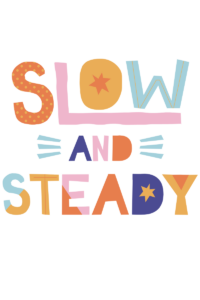Subitizing Helps With Fluency
Developing fluency is one of the most talked-about areas in math. OMG, do we talk about it? Whew! There are a billion strategies out there- some good, some not so good. Some strategies are researched-based, and some are passed along from teaching generation. Number Talk books
What no one can argue is that subitizing plays a vital role in developing fluency?
One definition of fluency is knowing how a number can be composed and decomposed. Subitizing is just that.
So What Is Subitizing Exactly?
Subitizing is instantly seeing how many. Recognizing a collection of objects as one unit. There are two forms of subitizing:
The first form is the Perceptual Subitizing.
This is the simplest form of subitizing. Studies have found that even animals and infants do it. This form of subitizing is the ability to see a couple of objects and immediately know the number. You can see this skill, for example, when you roll a die. After rolling, you immediately know how much without counting the dots one by one. To build this skill, children need a lot of exposure to visual patterns for quantities of three, four, and five. Subitizing Cards

The second form is Conceptual Subitizing.
This is a more advanced skill. It is the ability to see a larger number decomposed. Pictures with more than 5 dots help students with decomposition (break apart). If you were to see a set of 8 dots you might see it as two groups of four, or a group of five and a group of 3. This form of subitizing uses the counting on addition strategy and/or the counting back subtraction strategy. Subitizing App

Progression Of Subitizing
Here’s where we at times, fall short. Not all subitizing is created equal. There is a progression to keep in mind. At times when subitizing doesn’t seem to work for our students, it’s because they are on a different level of progression than you might expect.
Build Subitizing Skills
- There are a couple of types of dot images, one color dots or two colored dots. I almost always stick to one color dots. I only expose students to two colored dots when I want students to see specific combinations. Your asking students to see a particular number sentence.
- Show them in organized arrangements but also in scattered arrangements.
- You don’t have to use dots. It can be any shape or figure. It could also be beads, fingers, a carton of eggs.
- Subitizing can eventually help with counting on. Savy Subitizing
- Dot card quick flash is a great activity. Ask, “how many did you see? How did you see them? Make it the same using counters on your table.”
- Students can make their own subitizing cards using index cards and sticker dots or bingo markers. They have a lot of fun with this activity.
- Link to the subitizing cards to number sentences. But in Kinder, a teacher should write down the equations at first. For example:
3 and 4 is the same as
3 + 4 is equal to - Don’t forget about the older kids! Number talks provide opportunities to help students develop fluency through subitizing. It is not limited to Kinder and first grade. All grade levels need exposure but in different forms. You’d be surprised to see how early multiplication can start. My own son when shown 6 dots (at three years old) would say he saw two groups of three. Without knowing it of course he was building a multiplication skill. Try the example below with your students. See what they come up with.

Incorporate subitizing into your math routine. These activities could be done in the beginning of your math block, end of your math block, right before walking to special or waiting for dismissal. Multiplication subitizing cards
Want to check out more?
MEMBERSHIP SITE:
https://zennedmath.com/online-courses/
FACEBOOK GROUP: Zenned Math Teachers
https://www.facebook.com/groups/zennedmathteachers/
YOUTUBE CHANNEL: Zenned Math
https://www.youtube.com/channel/UC5njH_5LoK6G67BvZecGfnw?
WANT ME IN YOUR INBOX? Sign up for my newsletter
https://view.flodesk.com/pages/5efc876dcaabca0028b95eb5
DISCLAIMER: Some links included in this blog might be affiliate links. If you purchase a product or service with the links that I provide, I may receive a small commission. There is no additional charge to you!

